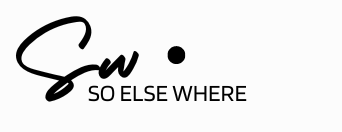As the business landscape evolves and remote work becomes increasingly prevalent, sales professionals are adapting their strategies to thrive in virtual environments. The art of closing deals has taken on new dimensions in the remote Sales closers environment, requiring a thoughtful blend of traditional techniques and innovative approaches. This article explores effective closing techniques specifically tailored for remote sales, offering insights into how sales professionals can navigate the unique challenges and opportunities presented by virtual interactions.
Mastering the Virtual Presentation:
In a remote sales environment, the presentation becomes a crucial element of the closing process. Mastering the virtual presentation involves not only delivering a compelling pitch but also utilizing visual aids, interactive elements, and multimedia to keep the prospect engaged. Incorporating technology seamlessly enhances the overall virtual experience and contributes to a successful close.
Building Trust Through Video Conferencing:
Trust is foundational in any sales interaction, and in a remote setting, video conferencing becomes a potent tool for building and maintaining trust. Face-to-face interactions, even in a virtual space, foster a deeper connection and allow prospects to associate a person with the product or service. Utilizing video conferencing consistently in the closing stages can significantly impact the trust-building process.
Utilizing Chat and Instant Messaging Strategically:
In a virtual environment, the use of chat and instant messaging tools becomes integral to the closing process. Sales professionals can leverage these tools strategically to address immediate concerns, provide additional information, and guide prospects through the decision-making process in real-time. The ability to maintain open lines of communication contributes to a more fluid and efficient closing experience.
Interactive Demos and Simulations:
Replacing in-person product demonstrations with interactive demos and simulations enhances the remote sales experience. These dynamic presentations allow prospects to engage with the product or service virtually, gaining a hands-on understanding of its features and benefits. Interactive demos create a tangible and immersive experience that can be instrumental in sealing the deal.
Seamless Document Sharing and E-Signatures:
Closing deals in a remote sales environment often involves the exchange of crucial documents and contracts. Utilizing seamless document-sharing platforms and e-signature solutions streamlines this process, eliminating delays and ensuring a smooth transition from the presentation to the finalization of the deal. The efficiency of these tools contributes to a positive closing experience for both parties.
Emphasizing Collaboration in Virtual Workspaces:
Virtual workspaces, such as collaborative document editing platforms and shared project spaces, offer opportunities for ongoing collaboration even after the initial presentation. Sales professionals can utilize these platforms to collaboratively refine proposals, address client feedback, and co-create solutions. Emphasizing collaboration in virtual workspaces strengthens the relationship and facilitates a more informed decision-making process.
Real-Time Analytics for Informed Decision-Making:
Leveraging real-time analytics provides sales professionals with valuable insights into prospect engagement during virtual interactions. Monitoring how prospects interact with presentations, which sections they focus on, and their response to key points allows for informed decision-making. This data-driven approach enhances the ability to tailor the closing strategy to align with prospect interests and concerns.
Scheduling Smart Follow-Ups:
In a remote sales environment, the importance of strategic follow-ups cannot be overstated. Utilize scheduling tools to automate and personalize follow-up communications based on prospect interactions and preferences. Smart follow-ups ensure that prospects feel valued, address any lingering concerns, and keep the momentum toward a successful close.
Creating a Virtual Sense of Urgency:
Creating a sense of urgency is a classic closing technique, and in a remote sales setting, this can be achieved through virtual means. Time-sensitive promotions, limited-time offers, and exclusive deals communicated effectively through virtual channels can stimulate a prospect’s decision-making process. Strategic use of virtual urgency can prompt quicker decisions and contribute to successful closures.
Customizing Closing Techniques to Individual Preferences:
Finally, the most effective closing techniques in a remote sales environment involve customizing approaches to individual preferences. Understanding how each prospect prefers to engage in virtual interactions—whether through video calls, emails, or collaborative documents—allows sales professionals to tailor their strategies for maximum impact. This personalized approach acknowledges the diversity of preferences in the remote work landscape.
Conclusion
Effectively closing deals in a remote sales environment demands a nuanced understanding of virtual dynamics and the strategic application of technology. Mastering the virtual presentation, building trust through video conferencing, utilizing chat and instant messaging strategically, incorporating interactive demos, embracing seamless document sharing and e-signatures, emphasizing collaboration in virtual workspaces, leveraging real-time analytics, scheduling smart follow-ups, creating a virtual sense of urgency, and customizing closing techniques to individual preferences collectively empower sales professionals to navigate the evolving landscape of remote sales closures.
By embracing these tailored approaches, sales professionals can not only overcome the challenges presented by virtual interactions but also capitalize on the unique opportunities for building strong and lasting customer relationships.

